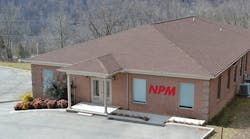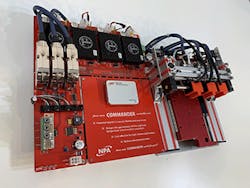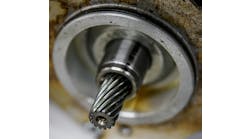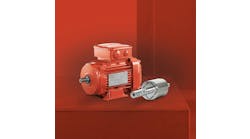Paul Denman is application engineer, business development, at Nippon Pulse.
What have been the biggest improvements to motor and drives in the past five years?
Paul Denman, application engineer, business development, at Nippon Pulse: Recently motor technologies have been improved through the advancement of optical encoder resolutions, with lower price points in most ranges of motor sizes, including NEMA 11 through 34 size stepper and brushless dc (BLDC) motors.
A motor is only as good as its controller/drive electronics when it comes to applications. This means controllers must be faster to respond to motor current and positioning changes, along with coordinating high-speed feedback for complex moves like linear, circular and arc interpolations.
What’s the most innovative or efficient motor/drive application you’ve ever seen or been involved with?
Paul Denman, application engineer, business development, at Nippon Pulse: In the field of semiconductor wafer inspection, there are critical control issues that need exact moves with very low noise. These profiled moves are needed to move an ultrasonic transducer over a 450-mm wafer for measuring wafer flatness. This involves many critical features of only the newest generation of motor controllers, with capabilities of exact tuning of the drive and actuators in the system for low vibration and efficient power control.
Also read: Ease of use dominates motor and drive trends
Of these, jitter or variation in the mechanics of the bearings and motor itself affect the performance of the system. An advanced controller must have nanometer accuracies and very high speed with little variation in the complete servo closed-loop systems. An advanced controller must be capable of receiving the actuator’s high-resolution encoder feedback—real position data—and responding within milliseconds with the appropriate power response for positional correction.
How have motors and drives benefitted from remote monitoring and connectivity?
Paul Denman, application engineer, business development, at Nippon Pulse: When it comes to monitoring the overall motion-controller health or well-being of operations, the greatest need is to be able to predict a possible failure early on to provide predictive maintenance. This involves not only the ability to connect and collect the data, but also the proper algorithms that are most reliable, so as to not cause a false alarm, which could be just as costly. Current, position and velocity are just some of the parameters that can be used as data for these calculations. Data-processing rates must be considerably fast enough to respond to a predictive solution. In other words, the more data the better.
Figure 2: The Commander module is geared for fast integration into a motion solution without the long and complex development of complicated script software languages.
How do motors and drives figure into digital-twin platform models being used by manufacturers?
Paul Denman, application engineer, business development, at Nippon Pulse: In fact a motor-and-drive control software is working from fundamental algorithms and monitoring anomalies in the data, a digital twin can work with a pre-learned intelligent controller’s data for optimum design and tuning efficiencies. Digital twins are good for the emulation of large-scale systems but fail at the ability to emulate all the possible millions of clustered data-point patterns required to predict a future failure. Real-world on-edge monitoring at high speeds will always be the better over air-gapped digital-twin modeling from the actual factory floor systems.
When will motors and drives become IT-friendly enough that engineers are no longer required for installation and operation?
Paul Denman, application engineer, business development, at Nippon Pulse: As an example of a new generation of controllers, Nippon Pulse has integrated its high-speed, four-axis, motion-controller chip into a friendlier module that can be programmed by a beginner mechanical engineer using a Basic-like coding approach. The lower-level, more complex motion functions are taken care of by the internal twin pair of ARM processor and coordinated motion chip. This new module is called Commander, and it is geared for fast integration into a motion solution without the long and complex development of complicated script software languages (Figure 2). This module is designed for a broad spectrum of OEM users, where a custom board and motion controller must be a part of a more complex OEM function, and machine integrators, who will need the fast-programming abilities of the module but will only need a simple box-level solution with the Commander core inside.
What future innovations will impact the use of motors and drives in discrete-manufacturing operations?
Paul Denman, application engineer, business development, at Nippon Pulse: Future focus in advancements will be in the improved quantitative data analysis of special algorithms and the miniaturization and integration of motors with onboard drives and controllers called integrated motors. Here the complex and noisy long cabling schemes all go away with a more cost effective combination of the controller drive and motors.
In addition to hardware size decreasing, the cloud-to-edge data communication will be pushed more to the edge on the factory floor. The reason for this is that the speed for getting large amounts of data through controllers to hubs, on to computer systems and then to a cloud-based system with software overhead is too much bandwidth. Intelligence will have to be pushed to the drive controller itself, giving it its own intelligence and reporting ability. As silicon gets faster and algorithms get more efficient, this will be a major trend rather than just an option for big data control.







